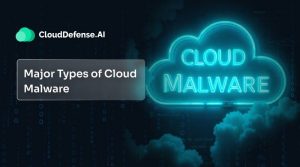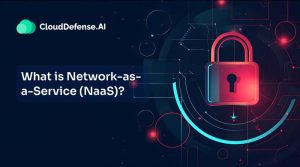DevSecOps Defined
DevSecOps is a methodology that integrates security practices directly into each phase of the software development lifecycle. It promotes collaboration between development, security, and operations teams, ensuring that security is a shared responsibility across the organization.
By embedding security early in the process, DevSecOps reduces vulnerabilities and speeds up delivery timelines. This ensures that software is not only built efficiently but also with security as a core component from the start, promoting a culture of continuous improvement and safety.
What does DevSecOps stand for?
DevSecOps stands for Development, Security, and Operations. It focuses on integrating security (Sec) into the DevOps process, ensuring that security measures are implemented and automated throughout the software development lifecycle alongside development (Dev) and operations (Ops) practices.
This approach ensures that security is considered at every stage, from design to deployment, making it a central part of the development pipeline rather than an afterthought. We have defined the three components of DevSecOps for more clarity below:
-
- Development (Dev): Refers to the process of writing, designing, and building software applications, focusing on functionality, efficiency, and innovation.
-
- Security (Sec): Involves embedding protection measures and testing throughout development to protect software from vulnerabilities, threats, and unauthorized access.
-
- Operations (Ops): Focuses on deploying, managing, and monitoring software in production environments to ensure reliability, stability, and performance.
Why Should We Use DevSecOps?
Attackers often exploit software vulnerabilities to gain access to an organization’s data and assets, leading to costly breaches that can damage a company’s reputation. The DevSecOps framework mitigates these risks by integrating security measures throughout the software development process, reducing the chances of deploying software with misconfigurations or vulnerabilities that could be exploited by malicious actors.
By prioritizing security at every stage, DevSecOps helps protect applications from potential threats and minimizes the impact of breaches on organizations.
-
- Security Built-In, Not Bolted On: DevSecOps incorporates security measures throughout all stages of software development. It starts with planning and coding continuing through deployment and monitoring instead of occurring as an afterthought or added later. Such a proactive approach makes it much harder for vulnerabilities to creep in unnoticed.
-
- Faster Delivery: Through automation of security tasks and encouraging effortless teamwork between development, security, and operations groups, DevSecOps eliminates slowdowns and lessens conflict in the software cycle. This means faster launch times, more regular upgrades, and a consistent flow of benefits for your users.
-
- Cost Savings in the Long Run: Fixing security vulnerabilities after they’ve been exploited can be incredibly expensive, both in terms of remediation costs and reputational damage. DevSecOps aids you in preventing such troubles by pinpointing and correcting security problems at an early stage when it is more cost-effective and simpler to handle.
-
- Efficient, More Productive Teams: DevSecOps reduces barriers among teams and promotes an environment where security responsibility is collectively shared. Such a method of working together results in enhanced communication, increased spirit, and a more favorable work atmosphere for all participants.
-
- Future-Proofing Your Software: Cyber attacks are more sophisticated nowadays, and traditional security approaches can struggle to keep up. DevSecOps, with its focus on automation, constant observation, and adjustment is ideally equipped to tackle the consistently altering security environment. It guarantees the enduring safety of your software.
Overall, integrating security throughout the process can help you build more secure, reliable, and user-friendly software while also saving time and money in the long run. It’s a win-win for everyone involved!
Key Components of DevSecOps
The connection between DevSecOps and CI/CD pipelines is all about synergy and integration. As we already discussed, DevSecOps, as a cultural method, promotes the incorporation of security through the SDLC. Meanwhile, CI/CD pipelines provide necessary automation and a continuous feedback loop, both of which are crucial to actualizing this.
1. Continuous Integration (CI)
In the Continuous Integration (CI) phase, DevSecOps incorporates automated security checks directly into the process. Whenever developers modify the code, the CI system triggers security scans such as SCA and DAST.
By identifying vulnerabilities early in the development cycle, DevSecOps enables developers to address security issues before the code progresses, reducing costs and effort while enhancing security.
2. Continuous Delivery (CD)
During Continuous Delivery (CD), DevSecOps ensures that security measures are integrated into the automated deployment process. This includes verifying external libraries, scanning for known vulnerabilities in dependencies, and managing risks related to licenses.
Additionally, secure configuration management practices protect sensitive information, like credentials, by enforcing encryption and access control to prevent unauthorized access.
3. Continuous Security
DevSecOps extends its security practices beyond the development pipeline to production environments through continuous monitoring. Tools for runtime security and threat detection ensure that the application remains secure even after deployment. This proactive approach helps detect and mitigate threats in real time, enhancing the overall security posture of the system.
4. Continuous Engagement between Teams
DevSecOps helps promote continuous collaboration between development, security, and operations teams. This shared responsibility ensures that security is integrated at every stage, from coding to deployment. By maintaining open communication and a constant feedback loop, teams can work together to identify and resolve security issues quickly, ensuring that the software development lifecycle remains secure and efficient.
What Are the Steps in the DevSecOps Pipeline?
DevSecOps pipeline is different from the traditional DevOps pipeline because it includes security considerations at every phase of the software development life cycle. Generally, the DevSecOps pipeline consists of five main stages:
-
- Planning: In the planning stage, a comprehensive security examination is conducted to formulate a strategy for testing. This plan outlines where, when, and how security tests will occur, focusing on identifying requirements and potential risks. The goal is to embed security considerations into the project plan from the start, ensuring security remains a priority throughout the development process.
-
- Code: Security measures begin during coding, where developers use linting tools to enforce coding standards and identify vulnerabilities early. Git controls are implemented to manage access and protect sensitive information like API keys and passwords. These steps help reduce risks during software creation.
-
- Build: In the build phase, Static Application Security Testing (SAST) tools are employed to analyze source code for vulnerabilities. Bugs and potential security issues are identified and resolved before code is deployed. This early detection aims to correct security flaws during the initial stages, preventing problems later in the development lifecycle.
-
- Test: DAST tools are used in this phase to simulate real-world attacks on the application. Tests focus on user authentication, SQL injection, and API endpoints, uncovering vulnerabilities not identified by static analysis. This ensures the application can withstand various threat scenarios.
-
- Release: Before deployment, the release phase involves performing vulnerability scanning and penetration testing using specialized security tools. These tests ensure the application is secure and resilient against potential threats, confirming it is ready for production without significant security risks.
In every stage, the DevSecOps pipeline includes security checks and procedures. It guarantees a forward-thinking and continuous method to deal with safety issues during the entire software development cycle.
DevSecOps Tools and Technologies
When integrating security into your DevOps process, it’s essential to choose tools and technologies that align with your existing workflow. Key DevSecOps tools include:
-
- Infrastructure as Code (IaC) Scanning: Tools that automatically scan code for misconfigurations help ensure that infrastructure managed through tools like Terraform adheres to security policies, reducing risks before deployment.
-
- Static Application Security Testing (SAST) Scanner: These tools scan custom code during development to detect vulnerabilities before the build stage. By providing real-time feedback, they allow developers to address issues early without impacting the project timeline.
-
- Software Composition Analysis (SCA): As teams rely on third-party components like open-source libraries and frameworks, SCA tools assess these for license violations, security flaws, and quality issues, ensuring compliance and minimizing vulnerabilities.
-
- Interactive Application Security Testing (IAST): This tool identifies security vulnerabilities during runtime or testing, providing detailed reports on problematic code segments to improve application security.
-
- Dynamic Application Security Testing (DAST) Scanner: Simulating real-world attacks, DAST evaluates an application during its execution to uncover vulnerabilities based on predefined attack scenarios.
-
- Container Scanning: Container security is crucial as containerized environments are popular in DevSecOps. Container scanning tools assess container images for known vulnerabilities, protecting applications before they go live.
Let’s read further to understand how these tools are used to implement DevSecOps.
How to Implement DevSecOps?
Integrating security into your DevOps workflow requires thoughtful planning. Begin by implementing processes that minimize disruption while delivering the greatest security benefits. Here are some strategies to integrate security into a standard DevOps sprint effectively.
Define Security Policies
Security policies lay out the instructions and guidelines that development and operations teams should follow during the software creation process lifecycle. These policies offer a structure to build secure applications and infrastructure.
-
- Clearly define access control policies, data protection policies, and secure coding practices.
-
- Specify encryption standards for data at rest and in transit.
-
- Outline guidelines for handling sensitive information and credentials.
-
- Define roles and responsibilities related to security within the development and operations teams.
-
- Ensure compliance with industry standards and regulations relevant to your application.
Integrate Security Tools
Integrating security tools into the CI/CD pipeline helps automate the identification of vulnerabilities and ensures that security checks are an integral part of the development process.
-
- Select and integrate security tools based on the specific needs of your application. Examples include static code analysis tools, dynamic code analysis tools, and container security tools.
-
- Put in place safety scanning at various stages of the pipeline, like pre-commit hooks, building stage, and deployment phases.
-
- Configure the tools to provide actionable feedback to developers, making it easier to address identified security issues.
-
- Regularly update security tools to ensure they cover the latest vulnerabilities and threats.
Automated Security Testing
The process of automatic security testing is beneficial in spotting and dealing with potential security weak points at an initial stage of development. This minimizes the chances that these vulnerabilities will make it to the production phase.
-
- Put SAST into action for examining the source code so as to identify any security weaknesses prior to making changes permanent.
-
- Use DAST in the CI/CD pipeline to make real-world attack situations and find runtime weaknesses.
-
- Utilize tools for testing security that can promote automation and simple integration into the flow of CI/CD.
-
- Arrange for automatic security checks within the continuous integration process to give prompt responses or feedback to developers.
Secret Management
Managing secrets in an effective way ensures that sensitive information, like API keys and database credentials, is dealt with safely during the entire process of development and deployment.
-
- Use dedicated secret management tools like HashiCorp Vault, AWS Secrets Manager, or Kubernetes Secrets.
-
- Refrain from directly storing sensitive information in code repositories.
-
- Encrypt sensitive data at rest and in transit.
-
- Implement access controls to limit who can access and modify secrets.
-
- Regularly rotate secrets to mitigate the impact of potential breaches.
Infrastructure as Code (IaC) Security
IaC security ensures that the infrastructure deployed through code is secure and compliant with organizational and industry standards.
-
- Utilize secure coding practices when writing infrastructure code (e.g., Terraform, CloudFormation).
-
- Frequently check and scrutinize IaC templates for issues of security using utilities such as Checkov or AWS Config Rules.
-
- Implement least privilege access for infrastructure components.
-
- Securely manage and distribute secrets within the infrastructure code.
-
- Integrate IaC security checks into the CI/CD pipeline to catch issues early.
Dependency Scanning
Dependency scanning aids in pinpointing and managing vulnerabilities in libraries and components of third parties utilized within the application.
-
- Regularly scan dependencies for known vulnerabilities.
-
- Keep an updated inventory of dependencies and their versions.
-
- Set up automated dependency scanning in the CI/CD pipeline to spot vulnerabilities during the build process.
-
- Stay vigilant for security advisories and promptly update dependencies to address known vulnerabilities.
Compliance as Code
Compliance as code ensures that the infrastructure and applications adhere to industry regulations and organizational standards.
-
- Define compliance requirements based on relevant regulations and standards.
-
- Implement checks in code to verify compliance, known as “compliance as code.”
-
- Use tools like CloudDefense.AI, AWS Config, or Azure Policy to enforce and monitor compliance.
-
- Integrate compliance checks into the CI/CD pipeline to catch non-compliance issues early.
-
- Regularly update compliance checks to align with changes in regulations or internal policies.
DevOps vs. DevSecOps
In traditional development, security is often addressed at the end, slowing delivery and increasing risks. DevOps solves this by combining development (Dev) and operations (Ops), allowing teams to work collaboratively and deploy smaller, high-quality code updates faster. Automation and standardized processes keep the workflow efficient, but security can still be left as an afterthought.
DevSecOps enhances this by embedding security into every stage of the development process. This is where the differences between DevOps and DevSecOps arise. It ensures that security concerns are tackled early, during planning, coding, and testing, instead of waiting until the final phase. This approach, often called shift-left security, makes the entire team responsible for security, reducing vulnerabilities and speeding up the development pipeline.
DevSecOps Best Practices
To smoothly integrate DevSecOps into your workflow, follow these essential best practices that focus on both culture and technology:
-
- Shift the culture: Promote open communication and flexibility.
-
- Define requirements: Set a security baseline and metrics.
-
- Start small: Gradually implement security tools.
-
- Perform threat modeling: Identify risks early.
-
- Implement automation: Automate security scans.
-
- Manage dependencies: Regularly update third-party components.
-
- Evaluate and improve: Continuously assess and refine the process.
We have a detailed blog on DevSecOps best practices that you can refer to! For now, let’s move on to understand the best way of integrating DevSecOps.
Conclusion: DevSecOps is a Unified Approach
While a single security tool might offer valuable protection, it’s only one part of what’s needed to secure the entire development process. For example, using automated security checks during CI can catch vulnerabilities early, but a complete DevSecOps strategy requires more.
To fully secure your development pipeline, you need a combination of tools, such as:
-
- SAST to find code vulnerabilities during development.
-
- DAST to simulate real-world attacks during testing.
-
- SCA to manage third-party dependencies and their risks.
-
- IaC Scanning to ensure your infrastructure is correctly configured.
-
- Continuous monitoring to detect threats in production.
-
- And more!
Together, these tools form a unified DevSecOps solution that provides complete coverage throughout the software development lifecycle.With CloudDefense.AI, you get all these solutions in one platform, simplifying security across your pipeline. Want to see how CloudDefense.AI can integrate smoothly into your DevSecOps workflow? Schedule a demo today!







